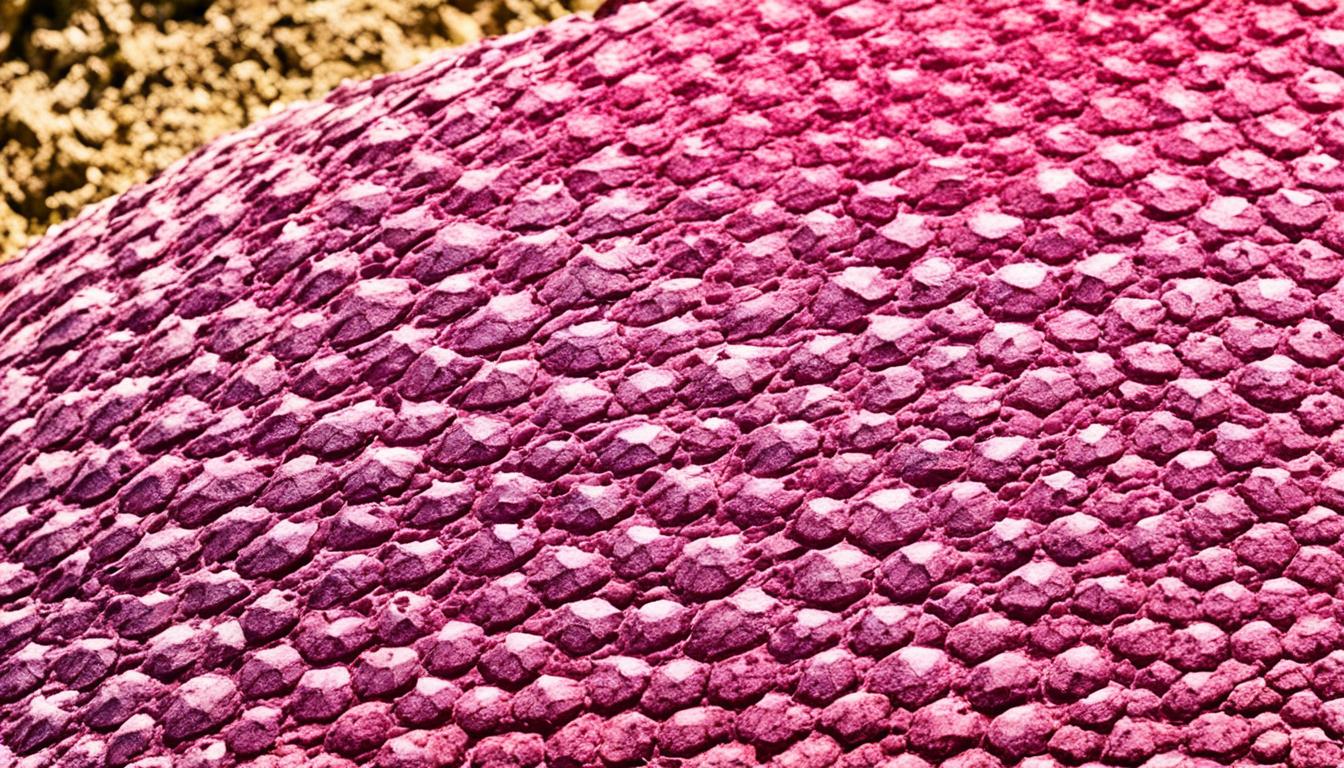Solar keratosis is a skin issue known for rough, scaly patches on sun-exposed skin. It’s seen in people who spend much time outdoors or have lighter features. This includes those with blond or red hair, and blue or green eyes. It’s often found in people over 40.
Catching and treating solar keratosis early is vital to prevent cancer. Choices for treatment include freezing the lesions and using creams. Recently, using stem cell therapy has shown positive results. Stem cells can help the skin heal and lower cancer risk.
To reduce your risk, use sunscreen, wear protective clothes, and stay out of the sun. Also, avoid using tanning beds. Check your skin often for any unusual spots. Prevention and early treatment are crucial for skin health.
Key Takeaways:
- Solar keratosis, or actinic keratosis, is a common skin condition characterized by rough, scaly patches on sun-exposed areas of the skin.
- These lesions are considered precancerous and have the potential to develop into skin cancer.
- The risk factors for solar keratosis include a light complexion, blonde or red hair, blue or green eyes, and significant sun exposure.
- Early diagnosis and treatment of solar keratosis is important to prevent the progression to skin cancer.
- Treatment options include cryotherapy, topical creams, and stem cell therapy.
- Following sun protection measures can help lower the risk of developing solar keratosis.
Symptoms of Solar Keratosis
Solar keratosis, known as actinic keratosis, appears as rough, scaly patches on the skin. They show up on areas often exposed to a lot of sun. These include the face, ears, neck, lips, forearms, and the back of the hands. The patches can look different, with colors like red, light or dark tan, pink, or skin-colored. They feel dry and rough to the touch, like scaly growths.
These skin changes can be more than their look. Some people may feel tenderness, itching, or a burning in the spots. While these patches usually don’t hurt, sometimes they can get irritated. In rare cases, they might bleed or turn into thick, hard growths that don’t go away.
Causes and Risk Factors of Solar Keratosis
Solar keratosis, or actinic keratosis, is mainly caused by long-term sun or UV exposure. This can come from the sun or from sources like tanning beds. Over time, sun damage can lead to the growth of these precancerous spots.
Those with fair skin, light hair, and eyes are more at risk. So are people who have spent a lot of time in the sun during their life.
Getting older also makes people more prone to solar keratosis. Our skin loses some of its ability to repair UV damage as we age. This makes older adults prime candidates for these issues.
If you have a weak immune system, your risk for solar keratosis goes up. This is especially true for those with conditions like HIV, who have had organ transplants, or suffer from certain autoimmune diseases. Such illnesses can lower the body’s ability to fight these skin problems.
Conclusion
Solar keratosis is a common skin problem that can turn into cancer if not treated early. Traditional treatments like cryotherapy and creams are common. But now, stem cell therapy is showing promise in healing the skin.
Preventing solar keratosis is crucial to avoid skin cancer. To protect your skin, use sunscreen, wear protective clothes, and stay in the shade. Stay away from tanning beds, which can damage your skin. Regularly check your skin and live healthily with enough water. These steps help keep your skin healthy and fight solar keratosis.
If you think you have solar keratosis, see a dermatologist. They can give you the right treatment after a proper check-up. Following their advice and using sun protection can keep you safe from skin cancer. It helps in preserving your skin’s health too.

